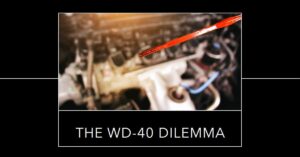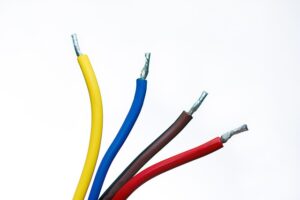Motor wiring plays a crucial role in the proper functioning of electrical motors. It is essential to understand the correct wiring procedures to ensure optimal performance and prevent potential damage.
Connecting motor wires backwards can lead to reversed rotation, increased current draw, overheating, potential motor damage, and safety hazards. However reversing the wiring of a single motor, specifically the neutral and hot wires, typically has no effect on motor operation.
This article discusses the effects of connecting motor wires backwards, the impact on motor performance, potential safety risks, troubleshooting solutions, and precautions to avoid reversing motor wiring.
Effects of Connecting 1-phase motors Backwards
In the case of a single-phase motor, reversing the wiring of the neutral and hot wires typically does not impact motor operation.
This is because single-phase motors do not rely on the polarity of the power supply for proper functioning.
The motor will still receive the necessary voltage and operate as intended regardless of which wire is connected to the neutral or hot terminal.
However, it’s important to note that while reversing the neutral and hot wires may not affect the motor itself, it can have implications for the electrical circuit and the connected devices.
Reversing the wiring of other components or devices in the circuit, such as switches or outlets, can lead to operational issues or potential safety hazards.
Therefore, it is generally recommended to maintain consistent and correct wiring practices throughout an electrical circuit to ensure safe and reliable operation.
Effects of Connecting 3-phase Motor Wires Backwards
Connecting motor wires backwards can have several adverse effects on the motor and its operation. It is important to be aware of these effects to address any issues promptly.
Reverse Rotation
One of the immediate effects of reversing motor wires is a change in the direction of rotation. Instead of rotating in the intended direction, the motor will rotate in the opposite direction.
This can lead to complications in various applications, such as fans, pumps, and conveyor belts, where the intended direction is critical.
Increased Current Draw
When motor wires are connected incorrectly, it can result in an increased current draw. The motor will experience higher resistance due to the reverse connection, leading to a surge in electrical current.
This can potentially overload the motor and associated electrical components, causing them to operate beyond their rated capacity.
Overheating
Reverse wiring can cause excessive heat buildup within the motor. The increased current flow due to the incorrect connection generates additional heat, which the motor is not designed to dissipate efficiently.
Overheating can lead to accelerated wear and tear, reduced motor lifespan, and even complete motor failure.
Potential Damage to Motor
Connecting motor wires backwards can cause severe damage to the motor. The increased current flow and heat can damage the motor windings, insulation, and other internal components.
Over time, this damage can compromise the motor’s performance, leading to malfunctions or complete breakdowns.
Risk of Electrical Failure
Reverse wiring can increase the risk of electrical failure in the motor and the overall electrical system.
The excessive current draw and heat generated by the incorrect connection can overload electrical components, including fuses, circuit breakers, and motor protection devices. Electrical failures not only disrupt motor operation but can also pose fire and safety hazards.
Read also my article: Understanding the Risks: Operating a 220V Motor on 110V.
Impact on Motor Performance
Reversing motor wires can significantly affect the performance characteristics of the motor, leading to suboptimal operation.
Decreased Efficiency
The reversed wiring can reduce the overall efficiency of the motor. Increased current draw and heat generation result in energy losses, reducing the motor’s efficiency and increasing power consumption.
Reduced Torque Output
Backward motor wiring can result in a decrease in torque output. The motor may not be able to deliver the required torque, affecting the performance of applications such as industrial machinery, robotics, and automotive systems.
Altered Speed Characteristics
Reversing motor wires can lead to changes in speed characteristics. The motor’s speed may vary from the intended specifications, causing inconsistencies in applications that require precise control over motor speed.
Unstable Operation
Incorrect wiring can cause the motor to operate in an unstable manner. It may exhibit irregular or erratic behavior, including vibrations, sudden stops, or unexpected movements.
Unstable motor operation can impact the overall performance and reliability of the system it is integrated into.
Potential Safety Risks
Reversing motor wires not only affects the motor’s performance but also poses safety risks to individuals and equipment.
Electrical Hazards
Reverse wiring increases the risk of electrical hazards, such as short circuits and electrical shocks. The excessive current flow and potential overloading can cause electrical components to fail or become damaged, potentially leading to dangerous situations.
Fire Hazard
The heat generated by the incorrect wiring can pose a fire hazard. Overheating of the motor and associated electrical components increases the likelihood of insulation breakdown and the ignition of nearby flammable materials.
Risk of Equipment Damage
Reversing motor wires can damage other equipment connected to the motor, such as controllers, drives, and sensors.
The increased current draw and electrical instability can affect the functionality and longevity of these devices.
Personal Injury
Improper motor wiring can result in personal injury, especially if individuals come into contact with live electrical components or if the motor malfunctions unexpectedly. It is crucial to prioritize safety and follow proper wiring procedures.
Read also my article: The Shocking Truth: Reversing Live and Neutral Wires.
Troubleshooting and Solutions
If you have connected motor wires backwards, it is important to address the issue promptly to prevent further damage or safety hazards.
Identifying Reverse Wiring
To troubleshoot reverse wiring, refer to the motor’s wiring diagram or consult the manufacturer’s documentation. These resources will provide guidance on identifying the correct wire connections.
Correcting the Wiring Connection
To rectify reverse wiring, disconnect the power supply and reverse the connections of the motor wires. Pay close attention to the correct polarities indicated in the wiring diagram to ensure proper alignment.
Inspecting Motor for Damage
After correcting the wiring, thoroughly inspect the motor for any signs of damage or overheating. Look for melted insulation, burnt odors, or unusual noise during operation.
If any damage is detected, it is advisable to seek professional assistance or replace the motor if necessary.
Resetting Motor Protection Devices
If the motor has protection devices, such as thermal overload relays or motor circuit breakers, ensure they are reset after correcting the wiring. These devices provide an added layer of protection against current overloads and overheating.
Precautions to Avoid Reversing Motor Wiring
Taking preventive measures can help avoid the pitfalls of reversing motor wires.
Understanding Motor Wiring Diagrams
Familiarize yourself with motor wiring diagrams and symbols. These diagrams provide a visual representation of the motor’s wiring configuration and guide correct connections.
Double-Checking Connections
Before energizing the motor, always double-check the wiring connections to ensure they match the specifications in the motor documentation or wiring diagram. Confirm the correct alignment of phases, polarities, and ground connections.
Labeling Wires
Consider labeling the motor wires during installation to avoid confusion and prevent accidental reverse connections in the future.
Clear and legible labels can be a helpful reference for future maintenance or troubleshooting.
Seeking Professional Assistance
If you are unsure about motor wiring or encounter difficulties during installation or troubleshooting, do not hesitate to seek professional assistance.
Electricians or motor technicians have the expertise and knowledge to handle motor wiring correctly and safely.
Conclusion
Connecting motor wires backwards can have various negative consequences on motor performance, safety, and overall equipment operation.
It is essential to understand the potential effects, take precautions to prevent reverse wiring and address any incorrect connections promptly.
Following proper wiring procedures and seeking professional guidance when needed will help ensure the reliable and efficient operation of electrical motors.

